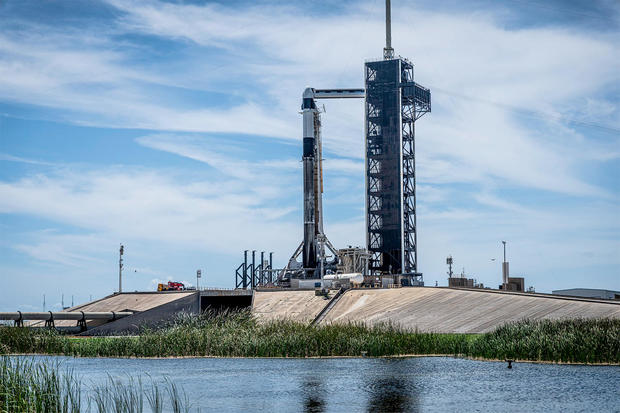
SpaceX again delays launch of Polaris Dawn, record-setting commercial spacewalk mission
The planned Wednesday launch of four civilians on a privately chartered spaceflight featuring the first commercial spacewalk has been delayed again, this time because of predicted bad off-shore weather where the crew capsule will splash down at the end of the flight, SpaceX announced late Tuesday.
The company said the Polaris Dawn launch was off until at least Friday, weather permitting.
“Our launch criteria are heavily constrained by forecasted splashdown weather conditions,” mission commander Jared Isaacman said in a post on X. “With no ISS (space station) rendezvous and limited life support consumables, we must be absolutely sure of reentry weather before launching.
wrote on social media. “We know many have traveled to see the launch, and we’re grateful for your support. Alongside @SpaceX, we’ll do our best to keep you updated.”
Isaacman’s crewmates are former F-16 pilot Scott Poteet and two SpaceX engineers, Anna Menon and Sarah Gillis. They plan to launch into a highly elliptical orbit that will carry them higher than any astronauts have flown since the Apollo moon program.
The flight is the second SpaceX trip to low-Earth orbit chartered by Isaacman, who at 16 founded what became one of the nation’s leading credit card transaction processors. In 2021, he financed and commanded the Inspiration4 mission, the first all-civilian commercial flight to orbit.
SpaceX
The Polaris Dawn mission is the first of three more SpaceX flights Isaacman is funding in cooperation with Musk and the first ever featuring non-government, civilian spacewalks.
Using a scaffold known as the “Skywalker,” Isaacman and Gillis will take turns floating up through the Crew Dragon’s forward hatch to reach open space, connected at all times by 12-foot-long tethers.
Because the ship does not have an airlock, its cabin will be vented to vacuum before the hatch is opened. Poteet and Menon will also be wearing SpaceX-designed pressure suits, and even though they will not get to stick their helmeted heads outside, they will be counted among the world’s spacewalkers.
The primary goals of the demonstration are to test the new suit’s joints, mobility and comfort to help SpaceX engineers develop lower-cost, easier-to-produce spacesuits for large numbers of people who SpaceX says will one day be venturing to the moon and Mars.
The crew also plans to test a high-speed laser communications system and will carry out a battery of bio-medical experiments throughout the five-day flight to help researchers from more than 30 institutions learn more about the effects of weightlessness.
More
More
Source: cbsnews.com